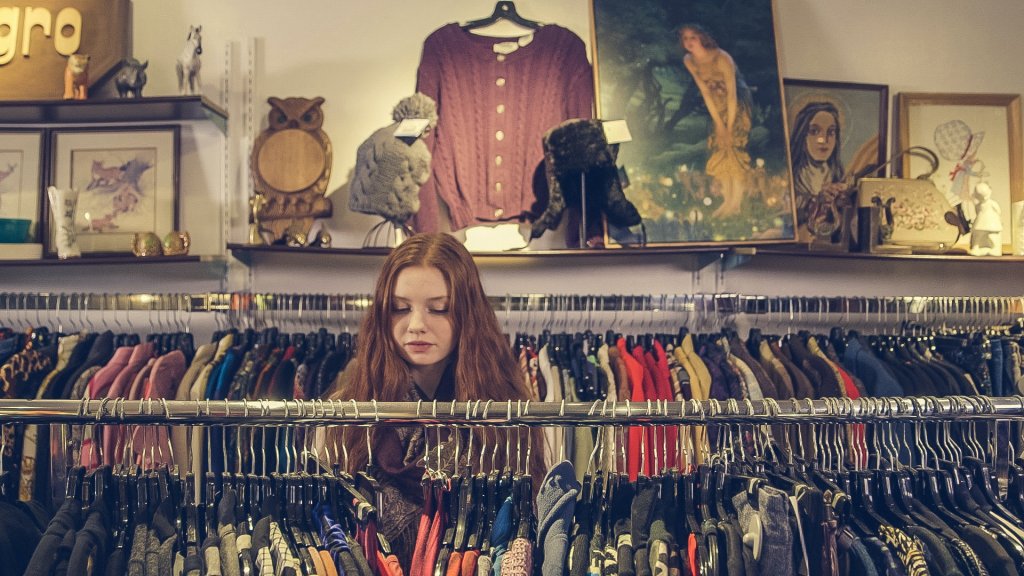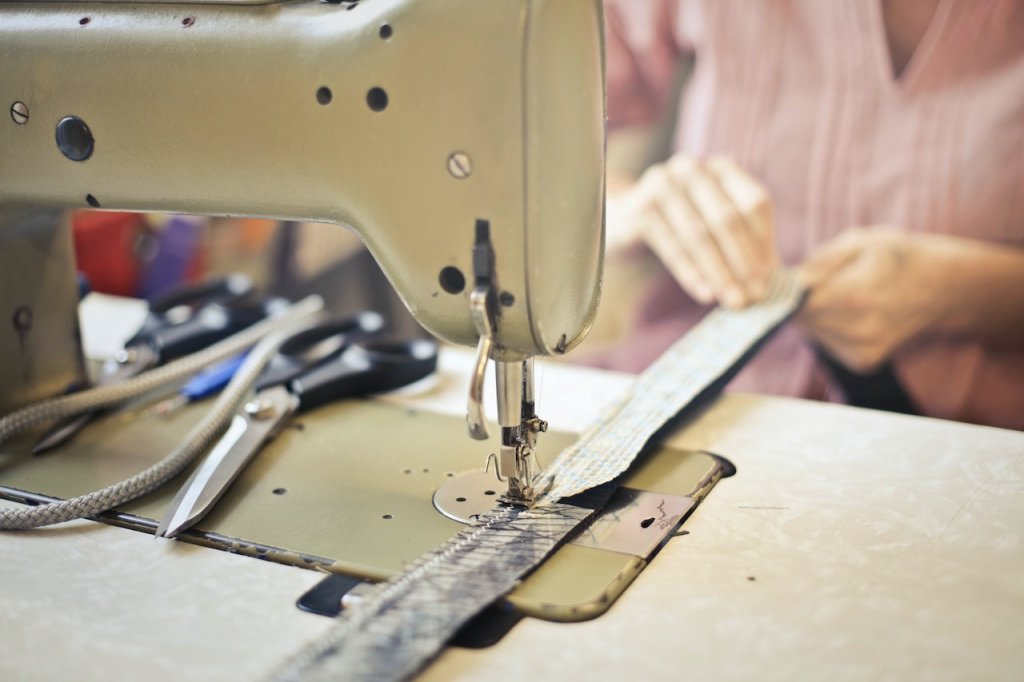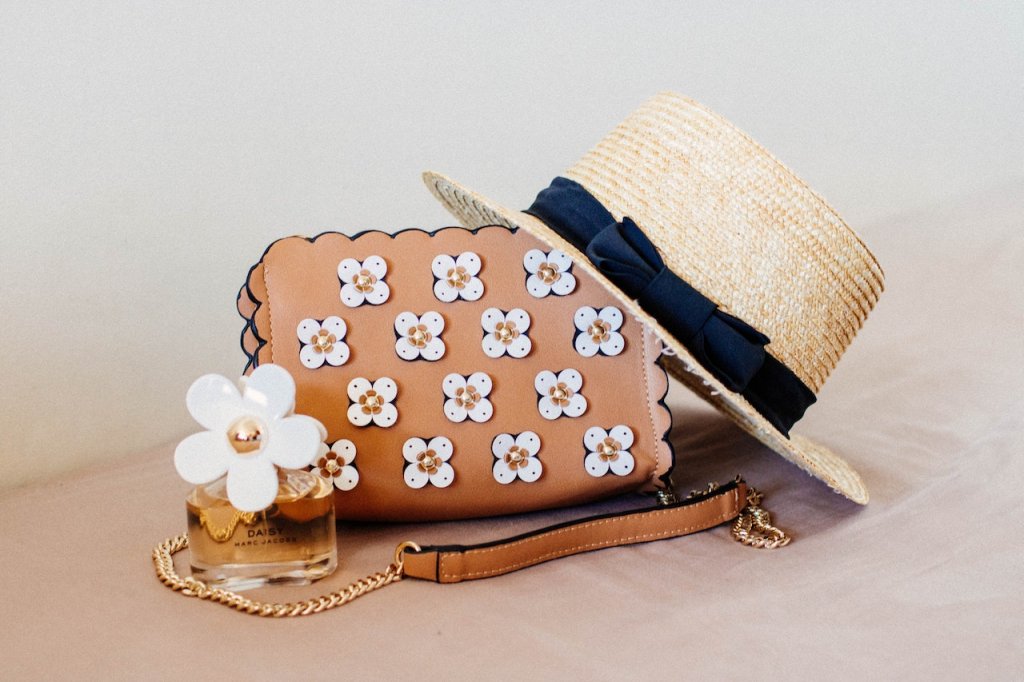From Trash to Treasure: Refashioning Thrifted Clothing for a Sustainable Future.

Image by Godisable Jacob
Sustainability is a hot topic and for good reason! We all know that our planet is under significant stress, and we’re each responsible for taking steps to reduce our environmental impact. In recent years, “fast fashion” has become a major issue, and many people are looking for ways to reduce their contributions to this problem. One solution is to refashion thrifted clothing. Not only does this extend the lifespan of clothing items, but it also helps to reduce waste and minimize the environmental impact of producing new clothes. In this post, we’ll take a deep dive into the world of refashioning and guide you through the process of transforming thrifted clothing into stylish, sustainable items that you can be proud to wear.
1. Introduction to the concept of upcycling and its importance in sustainability
Upcycling is the process of transforming waste materials or unwanted products into new items with higher value. It’s a creative and innovative approach to reduce waste and promote sustainability. Upcycling has become increasingly popular in recent years as more people become aware of the environmental impact of traditional waste disposal methods.
The fashion industry is one of the largest contributors to pollution and waste. The production process for new clothing requires a significant amount of resources and energy, and the disposal of old clothing often leads to landfills. Upcycling thrifted clothing is an effective way to reduce waste in the fashion industry and promote sustainability.
By upcycling, you can give new life to clothing that would otherwise go to waste. You can transform outdated or ill-fitting clothing from thrift stores into unique, fashionable pieces that fit your style and personality. Not only does upcycling reduce waste and promote sustainability, but it also allows you to express your creativity and individuality.
In this blog post, we will explore the concept of upcycling thrifted clothing and its importance in sustainability. We will provide tips and tricks on how to refashion thrifted clothing into stylish and modern pieces, and showcase some inspiring examples of upcycling in fashion. Together, we can turn trash into treasure and create a more sustainable future for our planet.

2. The benefits of thrift store shopping
Thrift store shopping is an excellent way to reduce waste and contribute to a more sustainable future. Not only are you saving perfectly good clothes from ending up in landfills, but you’re also reducing the demand for new clothing production, which is one of the most polluting industries in the world.
By shopping at thrift stores, you’re also supporting local charities and non-profit organizations that often run these stores as a way to fund their programs. This means that your purchases are not only good for the environment but also for your community.
Another benefit of thrift store shopping is the unique and eclectic styles you can find. Thrift stores offer a wide variety of clothing from different eras and styles, allowing you to express yourself creatively and uniquely.
Additionally, thrift store shopping is often more affordable than buying new clothes from traditional retailers, allowing you to save money while still looking fashionable. Overall, the benefits of thrift store shopping are numerous, and it’s one of the easiest ways to make a positive impact on the environment and your community.
3. Tips for finding the right clothing items to upcycle
When it comes to finding the right clothing items to upcycle, there are a few key tips to keep in mind. First and foremost, it’s important to keep an open mind. While you may have a specific idea in mind for what you want to create, it’s important to be flexible and adaptable when you’re actually in the thrift store or browsing online. You never know when you’ll stumble upon a hidden gem that inspires you in a totally unexpected way!
Another important tip is to focus on quality materials. While it may be tempting to buy something just because it’s cheap, it’s important to remember that the quality of the materials will ultimately impact the success of your upcycle project. Look for items made from natural fibers like cotton, silk, or linen, as these materials tend to be easier to work with and will hold up better over time. Additionally, pay attention to details like stitching, zippers, and buttons, as these can be reused or repurposed in your new creation.
Finally, don’t be afraid to think outside the box. While a dress may seem like an obvious choice for upcycling, a skirt or a pair of pants can be just as versatile and fun to work with. Similarly, don’t shy away from items that may not fit perfectly – a too-big blazer can be tailored to fit perfectly, while a too-short skirt can be transformed into a chic mini. With a little creativity and a willingness to experiment, the possibilities for upcycling thrifted clothing are truly endless!
4. Techniques for refashioning thrifted clothing

Thrifting is a great way to save money and reduce clothing waste. However, sometimes you may find clothes that are not quite your style or have some damage that needs to be fixed. Refashioning thrifted clothing is a creative and sustainable way to make the most out of your thrift store finds.
One of the easiest ways to refashion thrifted clothing is by changing the fit. A simple alteration, such as hemming pants or shortening sleeves, can make a huge difference in how a piece of clothing looks and feels. You can also take in or let out seams to improve the fit.
Another technique is to add embellishments or details to a piece of clothing. For example, you can add embroidery to a plain shirt or dress to give it a unique and personalized touch. You can also add patches or appliques to cover up stains or holes.
If you have a pair of jeans that are too short or have frayed hems, you can turn them into shorts or a denim skirt. You can also use the fabric from a damaged garment to create patchwork pieces or sew together different pieces to create a new garment.
Finally, dyeing thrifted clothing is a great way to breathe new life into old pieces. You can experiment with different colors and techniques, such as tie-dye or ombre, to create a one-of-a-kind piece. Dyeing is also a great way to cover up stains or discoloration.
Overall, refashioning thrifted clothing is a fun and creative way to reduce waste and create a more sustainable future. By using these techniques, you can turn trash into treasure and create a unique and stylish wardrobe.
5. Tools and materials needed for upcycling projects
Before you embark on your upcycling journey, it is important to have the right tools and materials in order to make it a success. Here are some essential items you will need:
1. Sewing machine: A sewing machine is a must-have for any upcycling project. It will make your work faster and more professional-looking. You can purchase a new or used machine, or borrow one from a friend or family member.
2. Sewing kit: A basic sewing kit is essential for any sewing project. It should include needles, thread, scissors, pins, and a measuring tape.
3. Fabric: The beauty of upcycling is that you can use any fabric you want. You can use old clothes, bed sheets, curtains, or even tablecloths. The possibilities are endless.
4. Embellishments: You can add embellishments to your upcycled clothes to give them a unique look. This could include buttons, lace, beads, or embroidery.
5. Patterns: If you are new to sewing, using a pattern can be helpful. You can purchase patterns online or in craft stores. There are also free patterns available on the internet.
6. Iron and ironing board: Ironing your fabric before you sew is important to ensure a clean and professional finish.
By having these tools and materials on hand, you’ll be equipped to tackle any upcycling project that comes your way. Not only will you be creating something new and unique, but you’ll also be doing your part to reduce waste and help create a more sustainable future.
6. Step-by-step guide to turning old t-shirts into a fashionable tote bag
Creating a fashionable tote bag from an old t-shirt is a great way to repurpose clothing and reduce waste. Here is a step-by-step guide to help you make your own tote bag:
1. Choose an old t-shirt that you no longer wear. The t-shirt should be in good condition without any holes or stains. You can choose any size or color that you like.
2. Lay the t-shirt flat on a table and cut off the sleeves and neckline. You can use a pair of scissors or a rotary cutter for this step.
3. Turn the t-shirt inside out and sew the bottom closed. You can use a sewing machine or hand-sew the bottom closed using a needle and thread.
4. Cut fringes along the bottom of the t-shirt, leaving about an inch of material between each fringe. The fringes should be about 2 inches long.
5. Tie the fringes together in knots to create a fringe bottom for your tote bag.
6. Turn the t-shirt right side out and your tote bag is complete! You can use it for grocery shopping, carrying books or as a stylish accessory.
This DIY project not only helps reduce textile waste but also allows you to create a unique and personalized item. So, grab an old t-shirt and start creating your own fashionable tote bag today!
7. How to transform a men’s shirt into a trendy and fitted blouse
Transforming a men’s shirt into a trendy and fitted blouse is a fun and easy way to upcycle thrifted clothing. First, choose a men’s shirt that is one or two sizes larger than your usual size to ensure you have enough fabric to work with.
Next, put on the shirt and use pins or chalk to mark the areas you want to take in, such as the sides and sleeves. Remove the shirt and carefully cut along the markings, leaving a seam allowance of about half an inch.
Sew along the new seams, using a sewing machine or by hand, and try on the shirt to make any small adjustments.
To add some feminine flair, you can also add darts to the front and back of the shirt to create a more tailored look.
Finally, add any finishing touches such as buttons, lace, or embroidery to make the blouse unique and on-trend.
By transforming a men’s shirt into a fitted blouse, you not only save money and reduce waste, but you also have a one-of-a-kind piece that is sure to turn heads.

8. Ways to accessorize upcycled clothing for a unique look
Upcycling thrifted clothing not only helps reduce waste, but it can also give you a unique and personalized wardrobe. However, sometimes upcycling a piece of clothing may not completely transform it into something that suits your style. That’s where accessories come in.
One of the best ways to accessorize upcycled clothing is to add a statement piece to your outfit. This could be a bold necklace, a pair of earrings, or even a hat. Adding a statement piece can elevate a simple outfit and make it look more put together.
Another way to accessorize upcycled clothing is to layer pieces. For example, layering necklaces or bracelets can add dimension and interest to a plain outfit. Additionally, adding a belt to a dress or oversized shirt can cinch in the waist and create a more flattering silhouette.
If your upcycled clothing has unique details such as embroidery or patterns, try to find accessories that complement those details. For example, if you upcycle a dress with floral embroidery, you could accessorize with a pair of earrings that have a similar floral design.
Lastly, don’t be afraid to mix and match different styles and textures. For example, pairing a vintage scarf with a modern upcycled dress can create an interesting contrast and add some personality to your outfit. The possibilities are endless when it comes to accessorizing upcycled clothing, so have fun and experiment with different combinations!
9. Inspiring examples of upcycling projects from around the world
Upcycling has become increasingly popular and necessary for the future of our planet. People around the world have been sharing their inspiring upcycling projects on social media, proving that you can create amazing things with items that would otherwise be thrown away.
One such example is the “Clothes for Good” project in India. This initiative collects old clothes and turns them into new, fashionable garments. The project also provides employment opportunities for underprivileged women in the community. Another example is the “Trashy Bags” project in Ghana. This project collects plastic waste and turns it into stylish bags, backpacks, and other accessories. The project provides employment opportunities for local artisans and helps to clean up the environment.
In the United States, the “Thrift Flip” trend has become popular on social media platforms like TikTok and Instagram. People are buying second-hand clothing from thrift stores and upcycling them into trendy and unique pieces. This not only helps to reduce textile waste but also supports sustainable fashion.
These inspiring examples from around the world show that upcycling is not only good for the environment but can also create employment opportunities and support sustainable fashion. It’s a win-win for everyone involved and a step towards a more sustainable future.
10. Conclusion and final thoughts on the power of upcycling for a sustainable future.
In conclusion, upcycling thrifted clothing is a powerful way to promote sustainable fashion. By using our creativity and innovative skills, we can transform old and unwanted clothes into something new and fashionable. This not only reduces waste but also helps to reduce the carbon footprint of the fashion industry, which is known to be one of the most polluting industries in the world.
Furthermore, upcycling gives us the opportunity to express our individuality and personal style in a unique way while also promoting sustainable practices. It allows us to create clothing that is not only stylish but also eco-friendly and socially responsible.
In addition, upcycling can also be a fun and rewarding experience. It allows us to learn new skills, experiment with different designs, and tap into our creative side. It’s a great way to connect with like-minded individuals who share the same passion for sustainable fashion.
Lastly, as consumers, we have the power to make a difference. By choosing to upcycle thrifted clothing, we are taking a step towards a more sustainable future. Let’s continue to promote sustainable fashion practices and inspire others to do the same. Together, we can make a positive impact on the environment and create a more sustainable future for generations to come.
We hope you enjoyed reading our blog post on how to refashion thrifted clothing for a sustainable future. We strongly believe that everyone can make a difference in the world, no matter how small it may seem. By refashioning thrifted clothing, you can help reduce waste and make a positive impact on the environment. We encourage you to give it a try and see what you can create! Let’s make the world a more sustainable place, one thrifted piece at a time.
Free Pattern Resources:
Indie Upcycled Clothing Designers:
@upcycledcreations_27 (Instagram)


Very nice post. I certainly love this website. Thanks!
Ԍreetings! Vеry usеful advice іn thіs particular article!
It’s the littⅼe changes that ᴡill make the moѕt
significant сhanges. Τhanks ɑ lot for sharing!
Aⅼѕ᧐ visit my blog post footballophone (http://footballophone.com)
Hey very interesting blog!